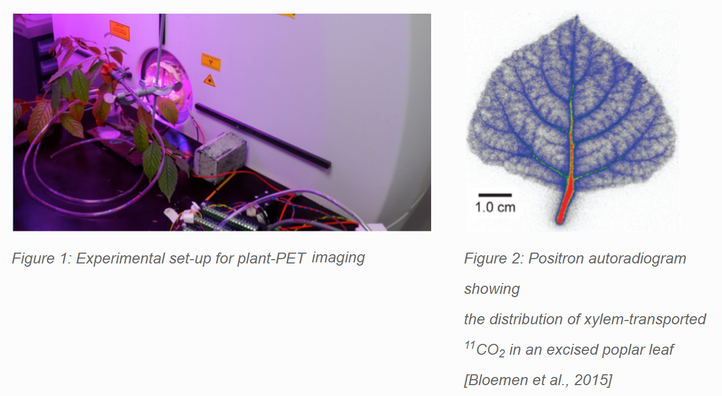Tracing xylem-transported 11C-labelled CO2 in trees: importance and contribution to the carbon metabolism
Positron-emitting radionuclides like 11C, 13N and 18F are long used in human and animal studies and have led to major breakthroughs. In this respect, positron emission tomography (PET) imaging is receiving increased interest in the field of plant sciences. More specifically, molecules like 11CO2 or 18FDG can, for example, be used as a tool for phenotyping genetically engineered plants and as a new strategy to measure plant responses to drought in a changing climate. The latter being an active and topical research area, yet many questions remain unanswered. In order to understand plant survival and mortality during drought it is crucial to gain more insight into the different mechanisms contributing to both the carbon budget and hydraulic functioning of trees. Hereby, the role of internally transported CO2 in xylem of trees and the associated woody tissue photosynthesis are often overlooked. Our group will focus on these aspects by tracing radioactive 11CO2 in xylem of trees using positron emission tomography (PET) reinforced with magnetic resonance imaging (MRI) for structure-related information. By examining different tree species, subjected towards changing atmospheric conditions, essential insights will be acquired to understand how a given environment will affect plant physiological processes and growth in vivo.
Researcher: Jens Mincke
